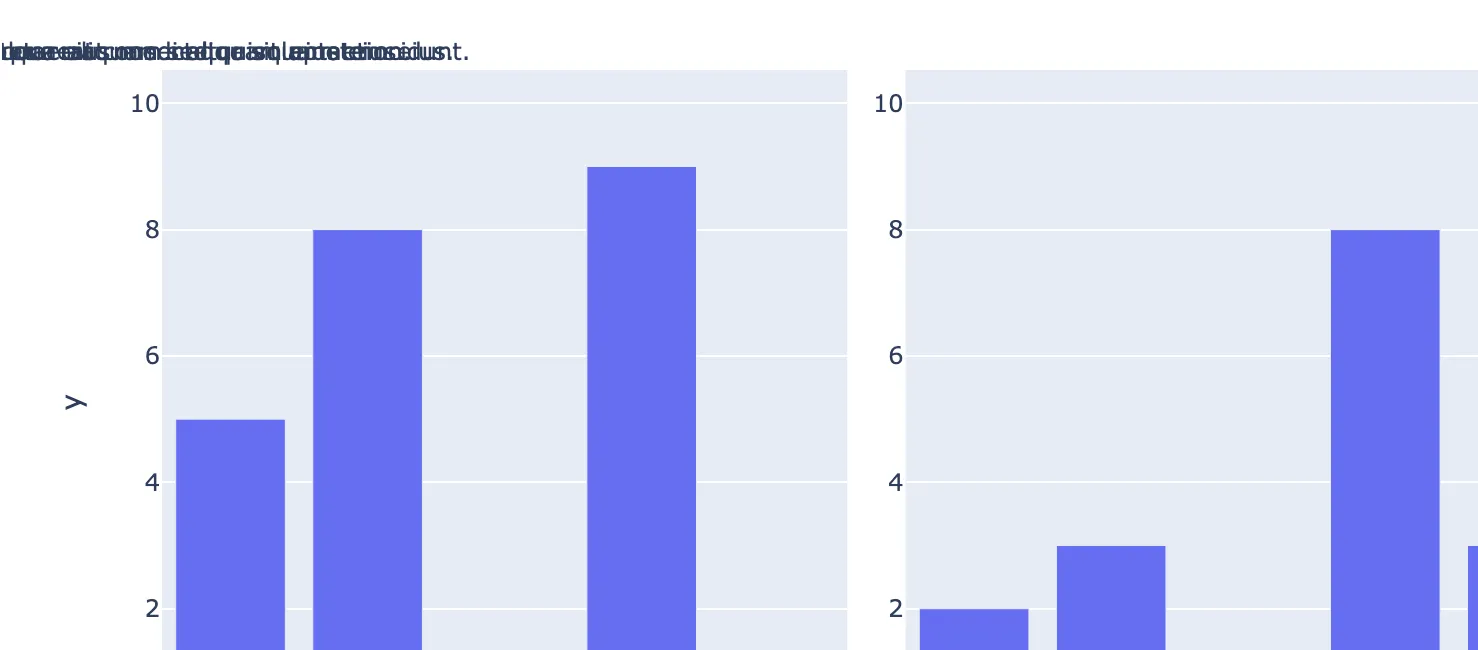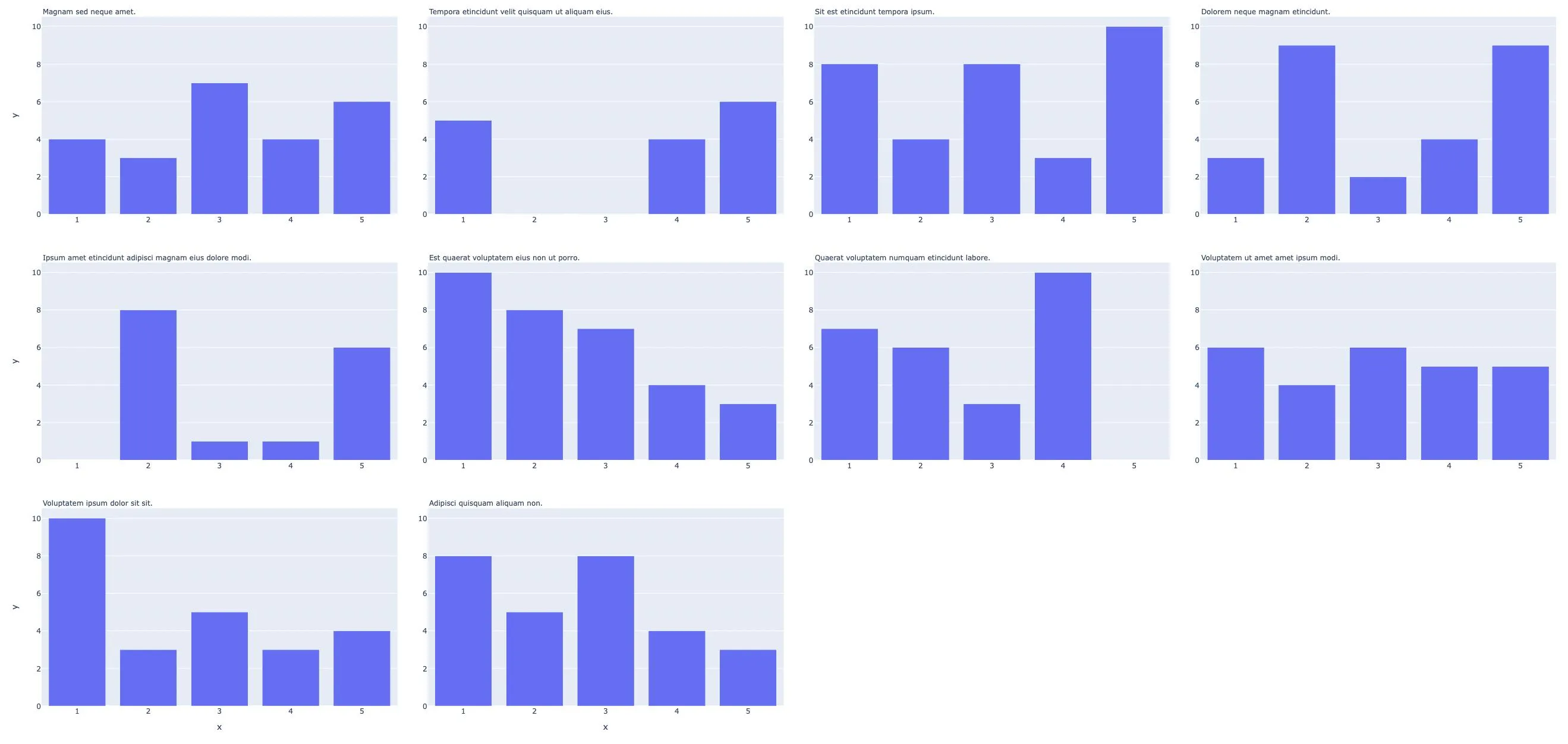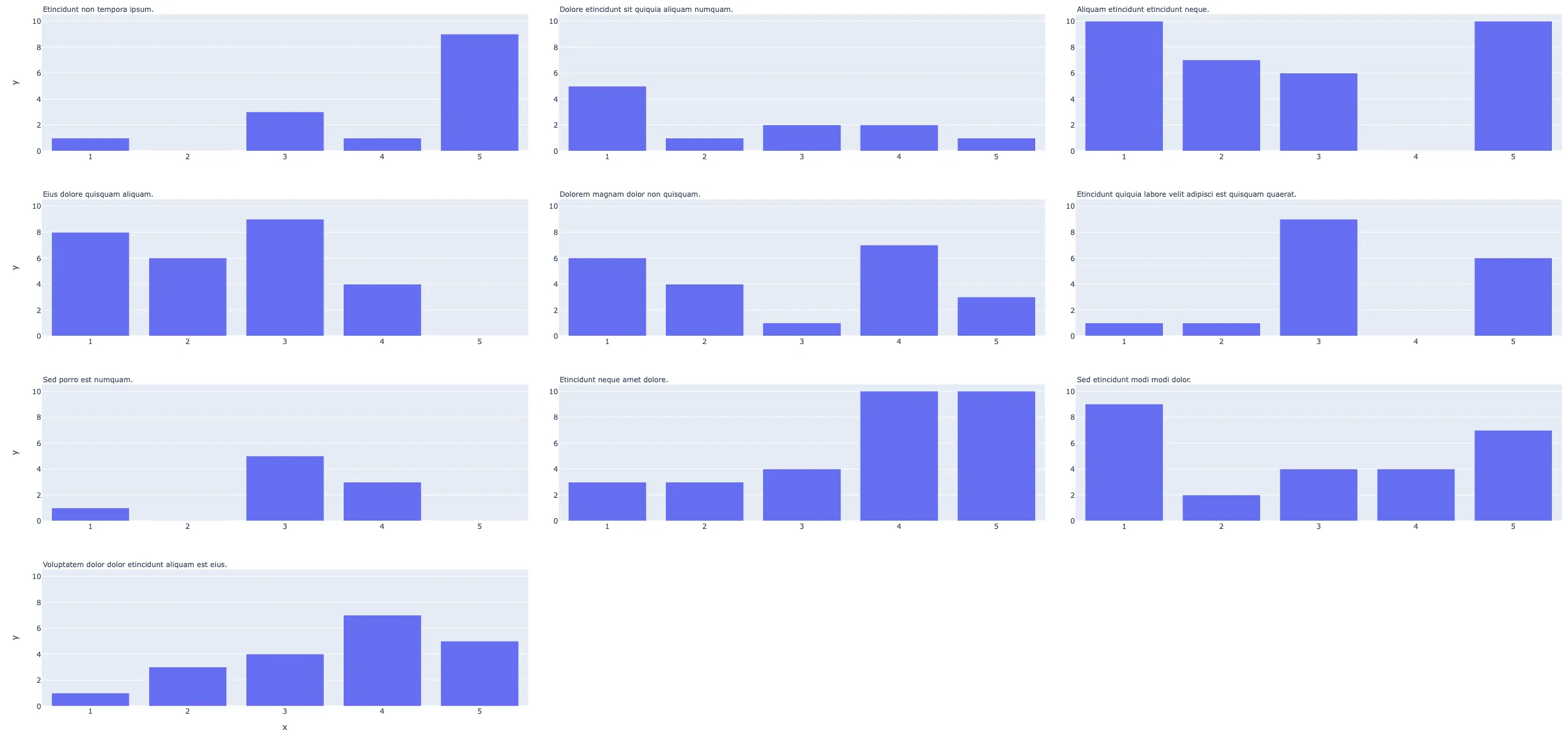一种方法是将
xref设置为轴 ID,而不是“paper”,这样标题就可以相对于相应的 x 轴坐标左对齐。
然而,正如 @Derek O 所提到的,棘手的部分在于如何在迭代过程中识别注释。考虑到输入数据已经被索引(
for i in range(10) 中的
i 是正确的),您可以使用此索引来检索相应的 xref,唯一的要求是保持(或创建)它们之间的映射。为了说明这一点,在子图标题中直接放置了索引:
K = 10
R = 5
items = np.repeat([f'{i}={lorem.sentence()}' for i in range(K)], R)
response = list(range(1,6)) * K
n = [random.randint(0, 10) for i in range(K*R)]
facet_col_wrap = 4
nrows = math.ceil(K / facet_col_wrap)
ncols = min(K, facet_col_wrap)
fig = px.bar(x=response, y=n, facet_col=items, facet_col_wrap=facet_col_wrap, height=1300)
xrefs = []
for r in range(nrows)[::-1]:
for c in range(ncols):
subplot_ref = fig._grid_ref[r][c][0]
xrefs.append(subplot_ref.trace_kwargs['xaxis'])
def updateAnnotation(a):
_, i, title = a.text.split("=")
a.update(text=title, xanchor='left', x=0, xref=xrefs[int(i)])
(
fig
.for_each_annotation(updateAnnotation)
.for_each_xaxis(lambda xaxis: xaxis.update(showticklabels=True))
.for_each_yaxis(lambda xaxis: xaxis.update(showticklabels=True))
.show()
)
检查fig._grid_ref中的SubplotRef非常有帮助,一个SubplotRef看起来像:
SubplotRef(subplot_type='xy', layout_keys=('xaxis', 'yaxis'), trace_kwargs={'xaxis': 'x', 'yaxis': 'y'})
更好的是:
>>> fig.print_grid()
This is the format of your plot grid:
[ (3,1) x9,y9 ] [ (3,2) x10,y10 ] [ (3,3) x11,y11 ] [ (3,4) x12,y12 ]
[ (2,1) x5,y5 ] [ (2,2) x6,y6 ] [ (2,3) x7,y7 ] [ (2,4) x8,y8 ]
[ (1,1) x,y ] [ (1,2) x2,y2 ] [ (1,3) x3,y3 ] [ (1,4) x4,y4 ]




facet_col_wrap传递到你分配给fig的部分中,然后稍后从fig中提取出来,并在需要它的地方进行传递(例如在remainder中)。我之所以这样问是因为将您的代码封装为一个方法并能够从传递给它的 fig 对象中了解facet_col_wrap将会很好。 - Tyler Rinkerfig.layout['xaxis'],fig.layout['xaxis2']...以及找出唯一区间的数量 - 我会相应地更新我的答案。 - Derek Ofig.layout中每个原始注释中唯一x值的数量-答案已经更新,让我知道这看起来是否不错! - Derek Opx.scatter图形上需要进行一次小的更新:使用len(fig.data)计算remainder和number_full_rows是不正确的,这导致最后一行的子图标题重叠在一起。这些代码需要更新为remainder = len(fig.layout.annotations) % facet_col_wrap和number_of_full_rows = len(fig.layout.annotations) // facet_col_wrap。希望这能帮助某人避免一点小麻烦。 - undefined